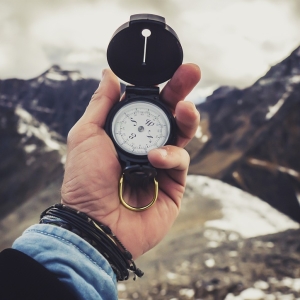In the colorful world of early education, hands-on learning stands out as a key player. It's like the fun, cool coach who transforms a standard playground game into an unforgettable adventure.
This learning style involves active participation, where young children learn through doing. Whether they’re piecing together blocks or planting seeds, these tangible experiences help turn their curiosity into real knowledge.
Boosts retention rates
Imagine trying to learn to ride a bike just from watching videos or listening to someone explain it. Sounds challenging, right? It's similar for young children learning new concepts. Hands-on learning, where kids can actively engage with their environment, significantly improves their ability to retain information.
When a preschooler builds a tower or mixes colors for painting, these actions reinforce their understanding by connecting theory with physical activity. This method is especially powerful at this age because it aligns with their developmental need to touch, manipulate, and experiment with their surroundings.
As a result, the lessons learned become more memorable and impactful compared to passive listening or watching.

Enhances critical thinking
Engaging directly with materials and problems, kids aren't merely following a set of instructions—they're learning to solve problems on their own. Consider what happens when a child’s block tower falls over.
Instead of giving up, they're prompted to think about why it happened and how to fix it. This encourages a mindset of analysis and improvement. Each failed attempt and subsequent adjustment develop their ability to think critically and adapt to new challenges.
This kind of problem-solving exercise prepares them for more complex situations in the future, fostering skills that are vital for academic success and everyday life.
Encourages independent learning
Hands-on activities naturally promote independent learning among young children. Consider the best Montessori toys for 2 year olds; these toys are meticulously designed to suit their learning stages and encourage kids to explore and learn at their own pace.
This autonomy builds confidence as children make choices and see the outcomes of their actions directly. For instance, when a toddler chooses which blocks to stack to create a structure, they are making decisions based on their understanding and preferences.
Such activities help them develop a sense of initiative and curiosity that is essential for lifelong learning, laying a strong foundation for more complex decision-making skills as they grow.

Promotes emotional and social development
Children learn by doing; this is important for their social and emotional development because humans of all ages frequently work in groups or pairs. Children learn how to communicate effectively with others through activities that involve sharing, working together, or taking turns.
Important social skills are taught through this, such as how to bargain, communicate their opinions, and listen to peer recommendations. Children who study in a cooperative setting are more likely to develop empathy as they start to comprehend and give consideration to the feelings and perspectives of others.
These early opportunities for teamwork aid in the development of a sense of belonging and community, both of which are essential for emotional health, well-being and discipline.
Makes learning joyful and relevant
Turning learning into a playful experience is key to engaging young minds effectively. Hands-on learning makes education enjoyable and relevant to the real world. Activities like playing in a sandbox can introduce young learners to concepts such as volume and measurement, while water play might explore physical principles like buoyancy.
By integrating learning with play, children are more likely to be engaged and enthusiastic. This approach not only makes education fun but also embeds knowledge deeply, making abstract concepts tangible. When children enjoy learning, they are more motivated to explore new concepts and continue the educational journey with excitement and interest.
Hands-on learning isn't just another educational buzzword—it's a powerful tool that transforms the early learning environment into a vibrant workshop of ideas and innovation. For preschool and kindergarten kids, whose natural curiosity about the world is as boundless as their energy, learning by doing isn’t just effective; it’s essential.
It lays down the foundational stones of knowledge while ensuring the journey is engaging and fun. Let's give these young explorers the tools they need to discover, learn, and grow in the most natural way possible!






